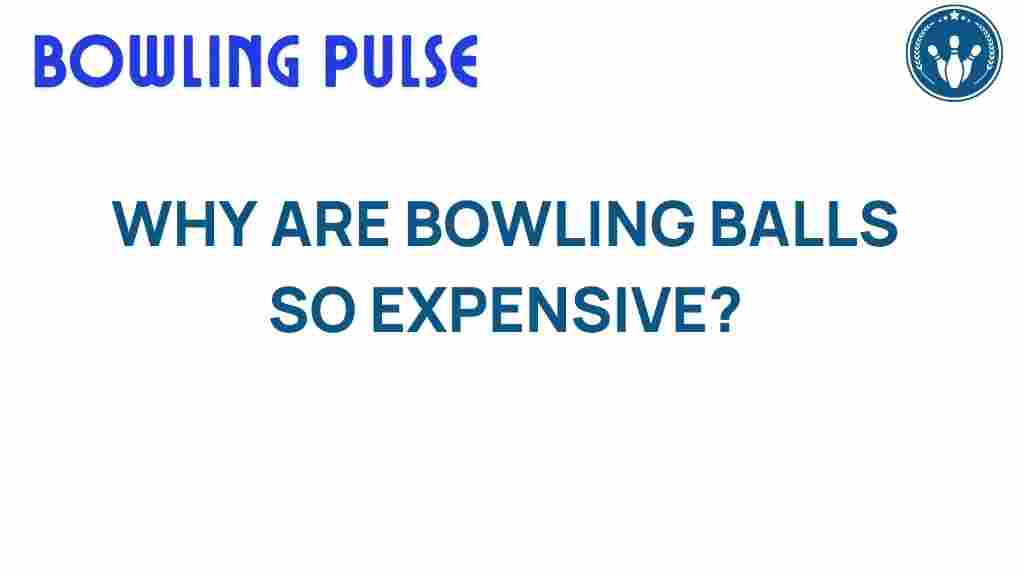The Hidden Costs: Why Are Bowling Balls So Expensive?
Bowling is a beloved pastime for many, combining skill, strategy, and social interaction. However, if you’ve ever browsed for bowling balls, you may have been surprised by their prices. This article delves into the cost analysis of bowling balls, exploring manufacturing processes, materials, market demand, and pricing trends. Understanding these factors will help consumers make informed choices when purchasing sports equipment.
Understanding the Manufacturing Process
The manufacturing of bowling balls is a complex process that involves several steps, each adding to the overall cost. Here’s a breakdown of the key stages:
- Material Selection: High-quality materials are essential for performance and durability. Common materials include:
- Urethane: Offers excellent control and is widely used in mid-range balls.
- Reactive Resin: Provides increased hook potential and is favored by competitive bowlers.
- Plastic: Often used for beginner balls due to its affordability.
- Core Design: The core of the bowling ball affects its weight distribution and performance. Manufacturers invest in advanced technology to create cores that enhance hook potential, leading to increased costs.
- Coverstock Production: The outer layer of the ball is crucial for performance. The manufacturing process involves mixing raw materials, curing, and shaping, which can be labor-intensive.
- Quality Control: Rigorous testing and quality assurance processes ensure that each ball meets performance standards, adding to the overall cost.
Material Costs and Their Impact
The choice of materials in bowling balls significantly influences pricing. Here’s how different materials impact costs:
- Urethane Balls: Generally range from $100 to $200. They provide a good balance of performance and durability.
- Reactive Resin Balls: These can cost between $150 and $300, as they are designed for advanced players seeking superior performance.
- Plastic Balls: The most affordable option, typically priced between $50 and $100, suitable for beginners.
Higher-quality materials result in better performance, which justifies the higher price tags of many bowling balls on the market.
Market Demand and Consumer Choices
The demand for bowling balls fluctuates based on several factors, including:
- Popularity of the Sport: As bowling gains popularity, the demand for quality equipment increases, driving prices up.
- Trends in Bowling: The rise of competitive bowling leads to a greater demand for high-performance balls.
- Consumer Preferences: Bowlers are increasingly looking for personalized options, which can raise production costs.
Understanding these market dynamics helps consumers anticipate pricing trends and make better purchasing decisions. Additionally, as bowlers seek to improve their game, they may opt for more expensive options, contributing to overall market demand.
Pricing Trends in Bowling Balls
Over the last few years, the pricing trends for bowling balls have shown a noticeable increase. Here are some key trends:
- Increased Customization: Custom designs and personalized bowling balls have become popular, often commanding a higher price.
- Technological Advancements: Innovations in material and design, such as asymmetrical cores, contribute to rising prices.
- Brand Influence: Popular brands often charge a premium due to their reputation and the perceived quality of their products.
These trends highlight the evolving nature of the bowling ball market and emphasize the importance of staying informed about pricing and product features.
Consumer Choices and Budgeting for Bowling Balls
When selecting a bowling ball, it’s crucial for consumers to consider their budget alongside their skill level and playing style. Here are some tips for making informed choices:
- Assess Your Skill Level: Beginners might opt for cheaper plastic balls, while intermediate and advanced players should consider investing in reactive resin or urethane balls.
- Consider Your Playing Style: If you frequently bowl in leagues or competitions, investing in a higher-quality ball can significantly enhance your performance.
- Set a Budget: Determine how much you are willing to spend on bowling balls and stick to it. Remember the long-term benefits of investing in quality.
Step-by-Step Guide to Choosing the Right Bowling Ball
Here’s a simple step-by-step guide to help you choose the right bowling ball:
- Determine Your Skill Level: Identify whether you are a beginner, intermediate, or advanced bowler.
- Identify Your Budget: Set a realistic budget based on your needs and preferences.
- Research Materials: Familiarize yourself with the different materials and their benefits.
- Test Different Balls: Visit a bowling alley that offers a range of balls to test your options.
- Seek Professional Advice: Speak with a pro shop expert for personalized recommendations.
- Make Your Purchase: Once you’ve found the right ball, make your purchase and enjoy your improved game!
Troubleshooting Common Issues with Bowling Balls
Even after selecting the perfect bowling ball, bowlers may encounter issues. Here are some common problems and their solutions:
- Ball Hooks Too Much: This might be due to the ball’s coverstock or core design. Consider selecting a ball with a less aggressive hook.
- Ball Skids Too Much: If your ball slides too far down the lane, it may have too much polish. Look for balls designed for more friction.
- Inconsistent Performance: Ensure your ball is properly fitted to your hand. A poor fit can affect your release and overall performance.
For more detailed advice on bowling balls and equipment, check out the resources available at Bowling.com.
Conclusion
In conclusion, the pricing of bowling balls is influenced by various factors, including manufacturing processes, material costs, market demand, and consumer choices. By understanding these elements, bowlers can make informed decisions that align with their skill levels and budgets. While the initial investment may seem high, the benefits of a quality ball can significantly enhance the bowling experience. Whether you’re a casual bowler or a competitive player, investing in the right bowling ball is crucial for improving your game and enjoying the sport to its fullest.
This article is in the category Equipment and created by BowlingPulse Team
